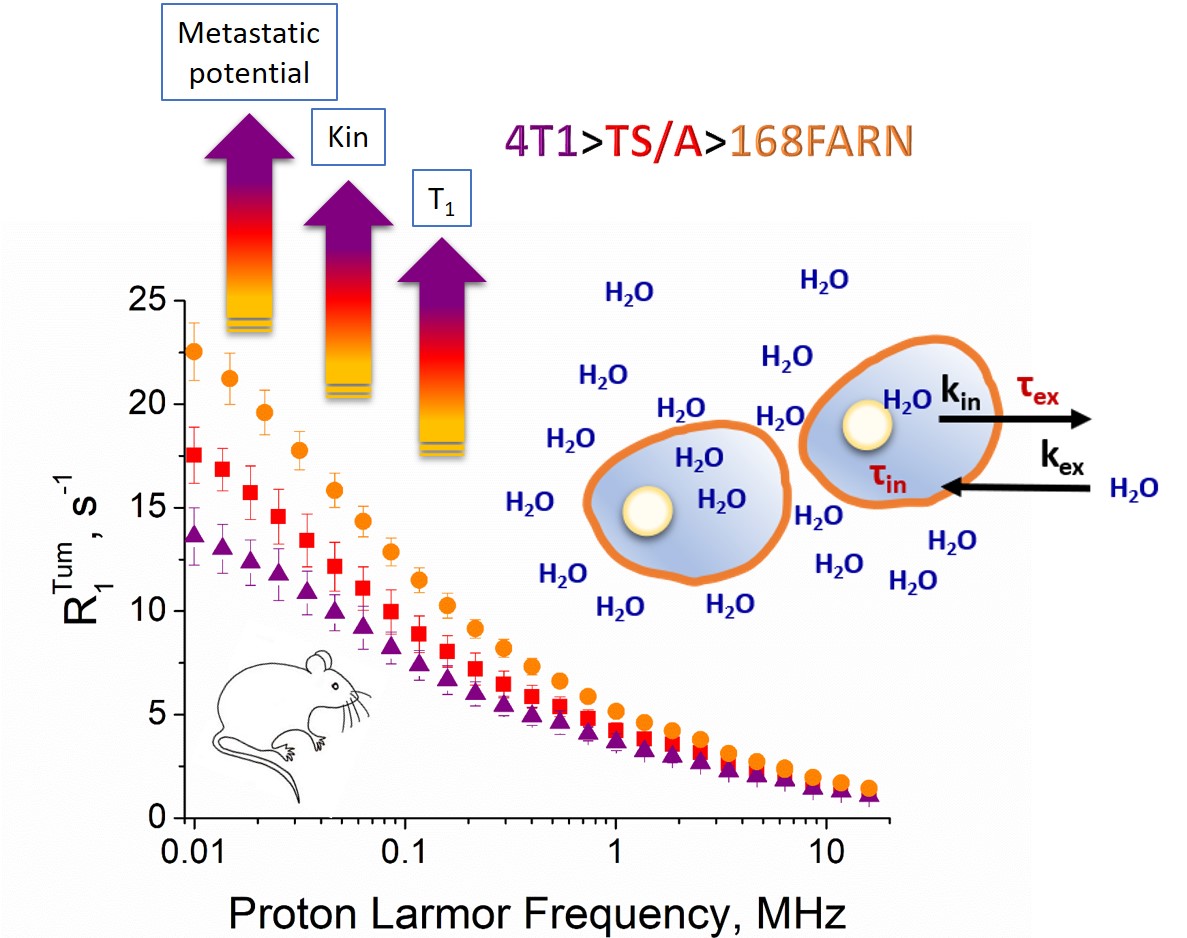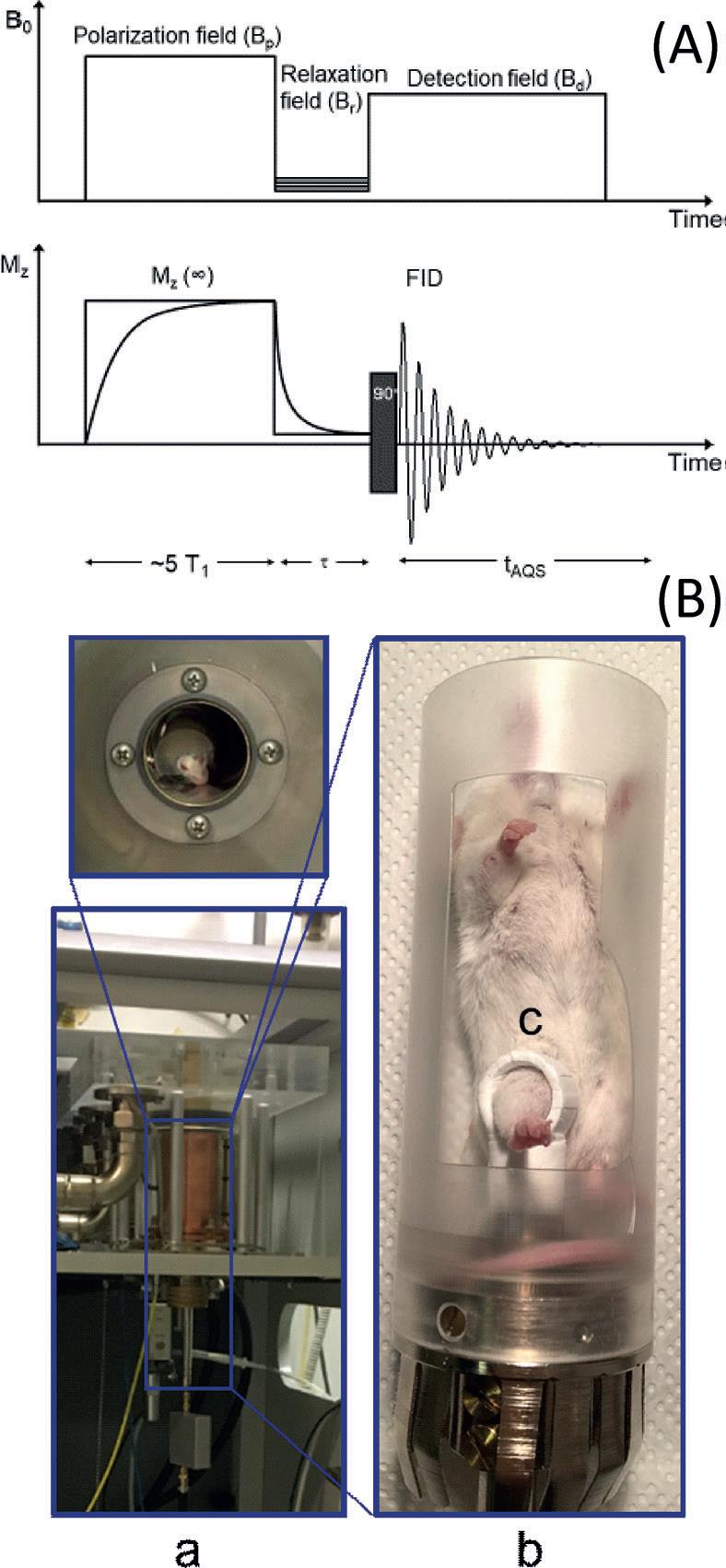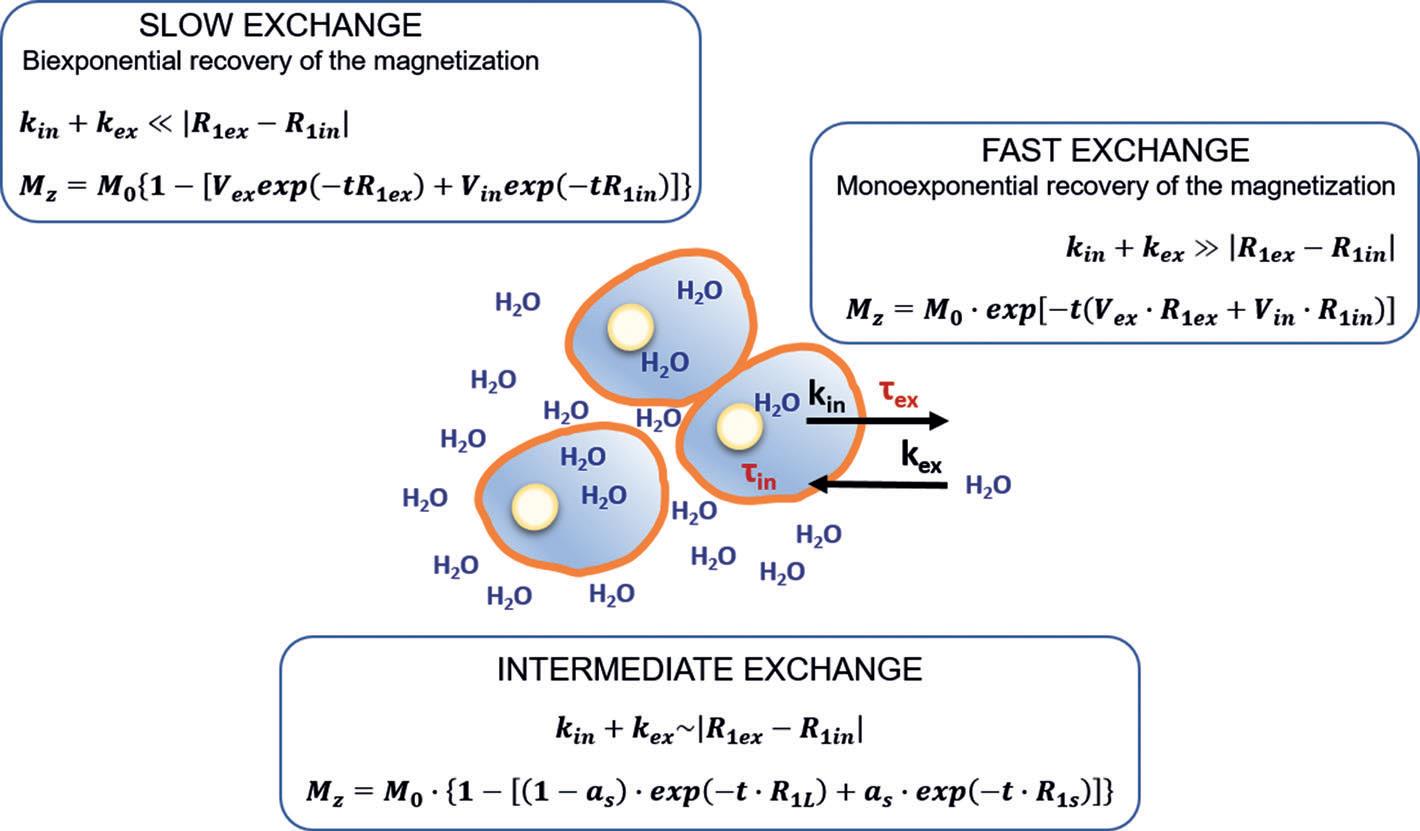Innovative diagnostic protocols for Fast Field Cycling NMR/MRI
Development of an innovative diagnostic strategy, based on the measurements of T1 at low and ultra-low magnetic fields with Fast Field Cycling (FFC-NMR) to obtain quantitative information on tumour aggressiveness and metastastatic potential, due to different water content and mobility. Differences in T1 are much greater at low field and the shape of the relaxation dispersion profiles may be used as a reporter of the molecular dynamical processes.

Evidence for the Role of Intracellular Water Lifetime as a Tumour Biomarker Obtained by In Vivo Field-Cycling Relaxometry
It was established through in vivo T1 measurements at low magnetic fields that tumour cells display proton T1 values that are markedly longer than those shown by healthy tissue.

Moreover, it has been found that the elongation of T1 parallels the aggressiveness of the investigated tumour. The T1 lengthening is associated with an enhanced water exchange rate across the transcytolemmal membrane through an overexpression/ upregulation of GLUT1 and Na+/K+ ATPase transporters. It follows that the intracellular water lifetime represents a hallmark of tumour cells that can be easily monitored by measuring T1 at different magnetic field strengths ranging from 0.2 to 200 mT.

Figure: The water exchange regime and the resulting MZ value in a schematic representation of the relationship between the compartmentalized system formed by the IN and the EX space. In the case of intermediate exchange, aS and R1S are the fraction and the rate constant for the apparent component with the shorter T1 (R1S=1/T1S); (1 aS)=aL and R1L are the fraction and rate constant for the apparent component with the longer T1 (R1L=1/T1L), and t is the running time for recovery by relaxation.
M.R. Ruggiero et al, Angew. Chem. Int. Ed. Engl. 57, 7468 (2018)